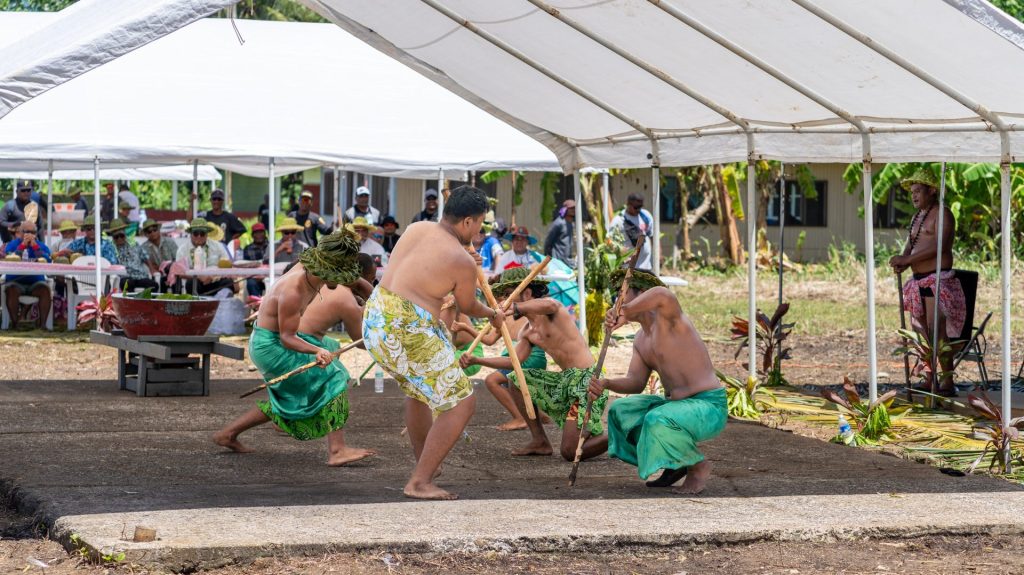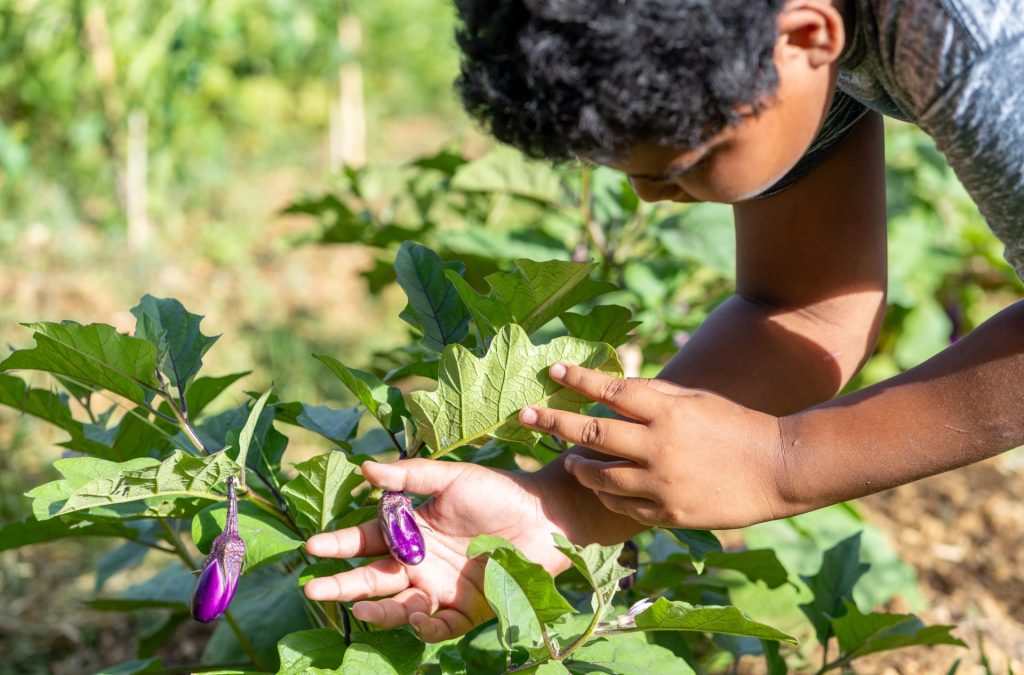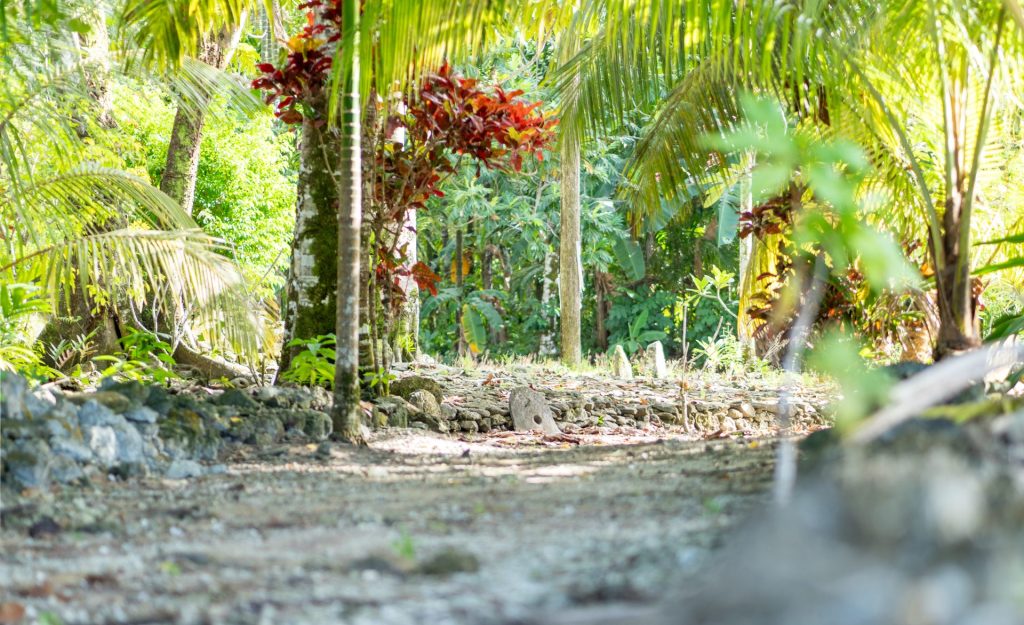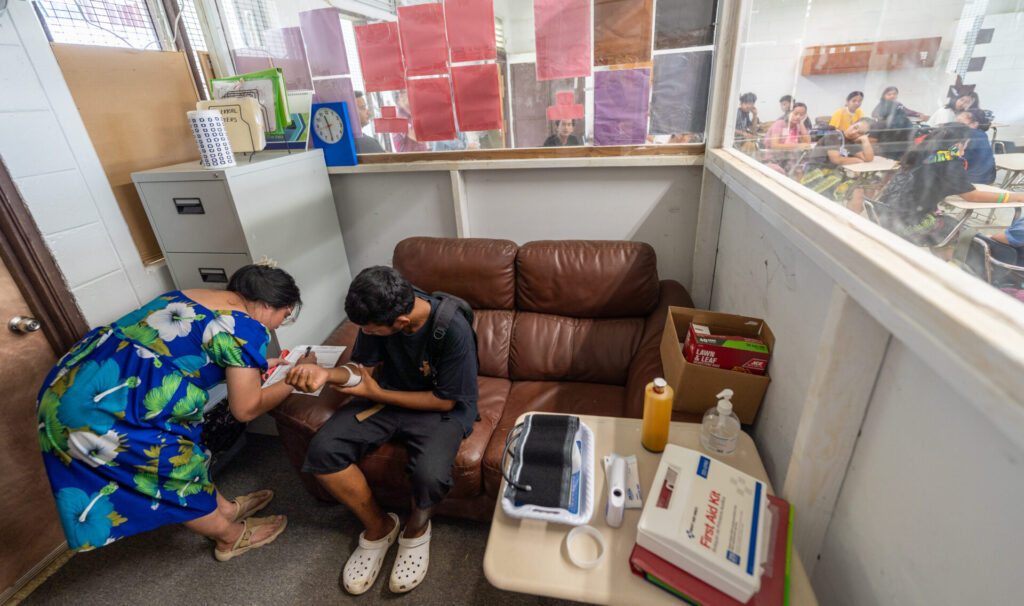Life in FSM flows at its own calm, steady rhythm, always in tune with the ocean. The heat is ever-present, broken only by sudden downpours and the constant barking of dogs echoing throughout the island. From anywhere on the islands, you can see the brilliant sparkles of the afternoon sun reflecting off the vast blue Pacific, reminding you of the eternal connection between land and sea. Everywhere you go, you are welcomed with warm smiles, long conversations, and a sense of timelessness that makes you slow down and appreciate the small, beautiful moments.
I recently traveled to the states of Chuuk and Yap as part of a World Bank mission, to consult with their Departments of Education and visit local high schools that are benefiting from performance grants supported under the “FSM SEE” project. The connection between the schools and the surrounding communities is exceptionally strong, and the depth of ownership by local leaders is really astounding.
At Chuuk High School, I had the chance to meet with a group of nursing students in senior year – their commitment and passion were palpable. They weren’t just studying to get a certificate—they saw their future careers as a way to give back to the people around them. Many of them spoke about their plans to work at the local hospital once they graduate. There was a deep sense of purpose in their words, knowing that their education would directly impact the health and well-being of their community. It was inspiring to hear these young students sharing their thoughts and aspirations for making a difference.

In Yap, I visited another high school and had many meaningful conversations, including one with a local leader. As we walked through the campus, he shared his thoughts on the importance of integrating Yapese culture and traditional trades into the school curriculum. In Yap, tradition and community are central to life: he believes that blending these elements into education would help students build a stronger sense of self-esteem and identity. This conversation was a powerful reminder that education isn’t just about academics—it’s also about nurturing students’ connections to their culture and heritage.
During my visit, I had many great dinners with one of the Assistant Secretaries of Education, Mr. Wayne Mendiola, whom I often talked about life in Micronesia. He put it perfectly: “In Micronesia, we are of the ocean. It’s the paddle that meets the water, not rubber that hits the road.” His words captured the essence of the islands, where the ocean isn’t just a backdrop—it’s a way of life. Progress here is measured by how well you navigate the waters, not by how fast you move

The FSM SEE project’s state-led implementation process is an excellent example of this approach. The performance grant system empowers each of the four states—Chuuk, Kosrae, Pohnpei, and Yap—to shape their own future by developing local workforces and fostering strong partnerships with the private sector. By doing so, they are not only addressing current labor market demands but also ensuring that local culture and traditions are preserved in the process.
My visit to Chuuk and Yap was both an intense learning experience and a powerful reminder that education is deeply personal in these communities. It’s about more than learning in the classroom; it’s about preparing young people to lead their communities, rooted in both skills and tradition. And as these students paddle toward their future, they carry their heritage with them, guiding them every step of the way.

Disclaimer: This post was crafted with the assistance of an AI writing tool trained on my earlier blog content. While the tool helped structure and streamline certain sections, all ideas, experiences, and personal touches are my own.



